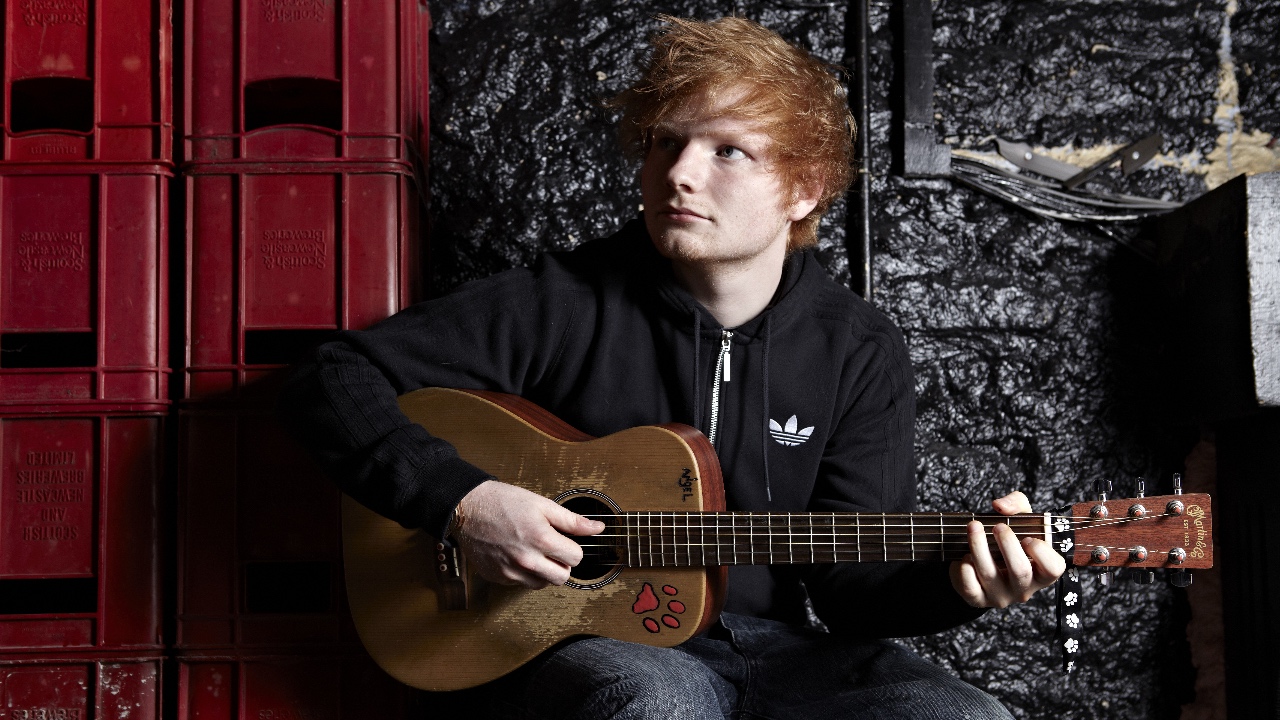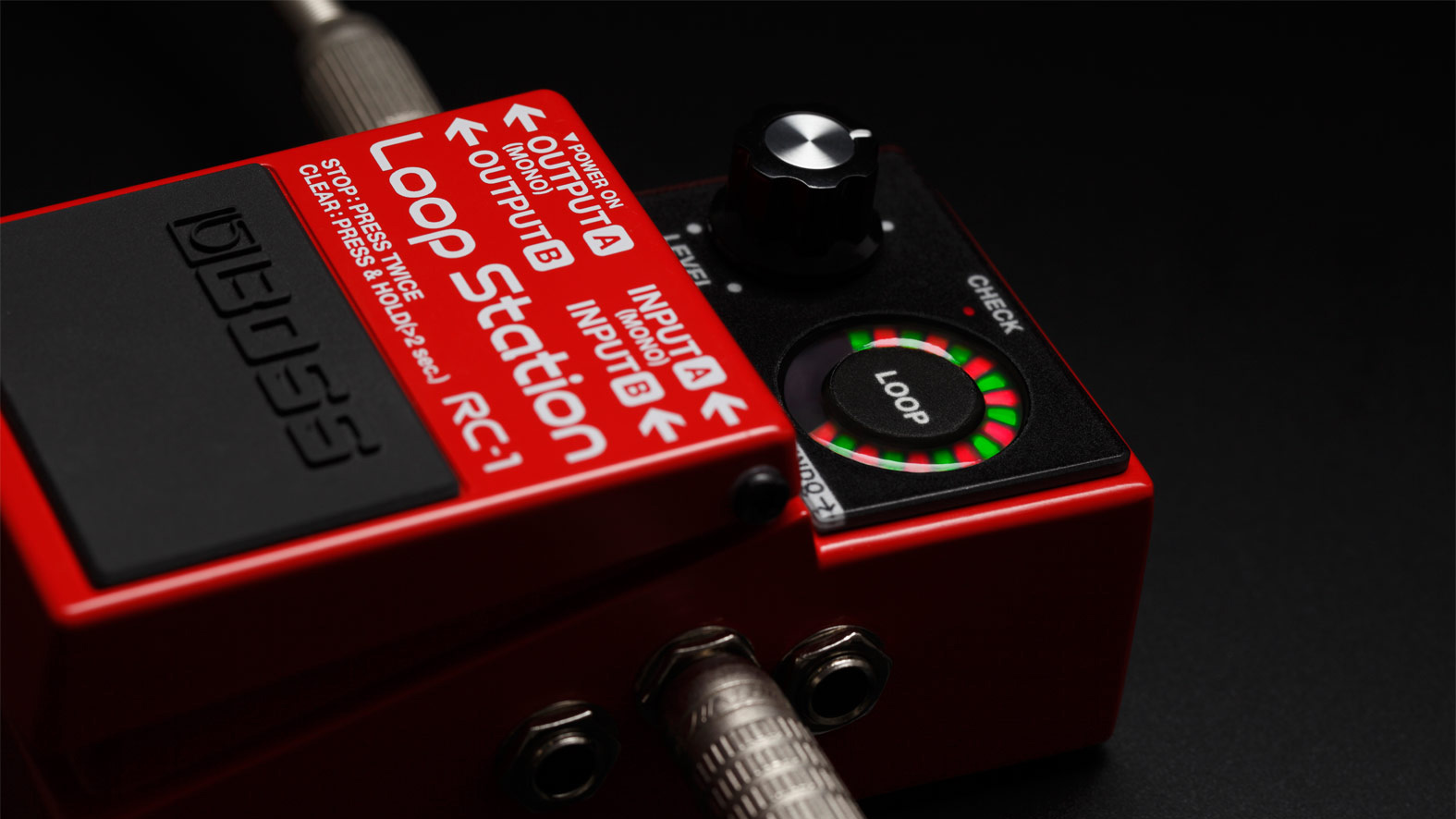Pioneers of looping: 9 guitarists who made the looper pedal a 21st-century pedalboard staple
Ed Sheeran and Robert Fripp come from very different worlds, but they and others blazed a trail, to make loopers mainstream

The looper pedal has been a game changer for guitarists in so many respects. Many of us have pedalboards overcrowded with modulation and reverb pedals, fairy dust for tone, but the practical application of the looper can make you rethink the instrument.

Essentially, a looper gives us guitarists the flexibility of sampling. It’s funny, though. Ask any guitarist what or who they think of when they hear the word “looper” and you will get very different answers. Some will say Ed Sheeran, the Promethean pop prince of looping, or KT Tunstall. Others might say David Torn or Robert Fripp.
All of these players use the looper pedal quite differently, but it goes to show you its various applications. Sure, for singer-songwriters, the looper has been a godsend. The ability to record loops of verses and choruses has facilitated a new era in solo performance, instant accompaniment – and totally inexhaustible.
For the likes of Fripp and Torn, the looper presents different possibilities, with overdubbing loops allowing for ambient adventures in guitar, using the looper much like its kissing cousin, delay.
Then we’ve got others who fall between both camps. Players such as Kurt Vile might record a loop from external audio and bring that in as an effect. A relatively new production line effect, there’s no question that there’s still some pioneering to be done here, but these players show that, with a little imagination – and often with necessity in mind – a looper can be the pedal that transforms your songwriting, your performance and your playing.
1. Robert Fripp (King Crimson)
Take a look at the video above. The year is 1979. Fripp does not have a looper pedal. He does not have a pedalboard. But this performance of Frippertronics is testament to the artist potential of having instantly accessible overdubs, extending the voice of one guitar into two, three or more.
The King Crimson guitarist is using very different technology; analogue tape reels set up side by side with what’s recorded on one being sent onto the other and then returned, creating a delay effect to which you can add new layers of guitar. It’s genius, making Les Paul-style overdubs in real-time as performance, drawing up new horizons for progressive guitarists to chase down.
Get the MusicRadar Newsletter
Want all the hottest music and gear news, reviews, deals, features and more, direct to your inbox? Sign up here.
Looper of choice: Analogue tape reels, aka Frippertronics
Get the tone today: TC Electronic Ditto X4 Looper
2. KT Tunstall
A KT Tunstall set is a change of pace from Fripp’s avant-garde adventurism but when you consider that she was the first artist to put her faith in a looper, making it a centrepiece of her performance, it is perhaps all the more courageous.
Call it a loop of faith, if you will. Tunstall’s a songwriter through and through, concerned with verse and chorus and sticking the landing – anything that gets in the way of that is a distraction. When she performed Black Horse And The Cherry Tree live before a television audience – building loops, playing to them – it was as though we were back in the cave and she had just discovered fire.
Looper of choice: Akai E2 Headrush, Boss RC-30
Get the tone today: Boss RC-30
3. Kurt Vile
You don’t necessarily have to use your looper simply just for guitar. Kurt Vile can and he does, and you’ll hear him use it as almost a de facto holding pattern for his songwriting, as though he is keeping a motif there until the whole thing hovers into sight. But he’ll also use it as a sampler, recording loops from his Yamaha CS-60 and bringing them in to support what he is doing on guitar.
Vile might sound permanently disorganised, and maybe he is, but when either using the looping function on his Line 6 DL4 unit or Boss RC-30, it ultimately all makes sense in the mix.
Looper of choice: Boss RC-30, Line 6 DL4
Get the tone today: Line 6 DL4
4. Ed Sheeran
The Grand Poobah of looping, Ed Sheeran is responsible for the looper pedal entering the everyday lexicon of the average, non-guitar-playing music fan. If anyone demonstrates the sheer scale of looping’s potential to elevate what is ostensibly a solo open-mic acoustic performance to a U2-esque stadium extravaganza, it’s Sheeran.
He has used a variety of systems but most famously his first-gen Chewie Monsta looping station and its successor, Chewie II. Both custom-built by his guitar tech Trevor Dawkins, they are like over-sized Fisher Price toys, their intuitive design crucial in allowing Sheeran to access their functionality, which allows him to loop percussion, vocals and guitar. The RC-20 channel suggests there’s a Boss RC-20 programmed into it.
Looper of choice: Chewie Monsta, Chewie II
Get the tone today: Boss RC-300
5. Tash Sultana
Tash Sultana places a lot of faith in the Boss RC-30, running guitar, drum samples and whatever external instrumentation that’s required through it, but it won’t be all gamed it beforehand. If you have a suspicion that a looper pedal is going to place too many constraints on you and over-complicate your sound, Sultana will divest you of it.
Sultana learned performance while busking Melbourne streets, building a multi-instrumentalist sound that is hard to pinpoint. Sultana is doing what so many tone pioneers have done before, creating a sound we can’t replicate, that the audience can’t get anywhere else – with a pedalboard game that is next-level.
Looper of choice: Boss RC-30
Get the tone today: Boss RC-30
6. Sarah Lipstate (Noveller)
Setting aside the looper pedal for just one moment. Lipstate, aka Noveller, is another player who is both ahead of her time and yet perfectly attuned to it, and her approach to pedalboard curation is one to be studied in-depth. She even developed a crazy BiLT guitar with onboard fuzz, pitch-shifter, delay and reverb which she took out on the road when playing with Iggy Pop.
Her looping all goes through the super-expansive Boomerang III Phrase Sampler, which she will use to build songs in the moment while performing, using each of its independent looping banks to add depth, dynamism and – heck – a little danger into her performance.
Looper of choice: Boomerang III Phrase Sampler
Get the tone today: Headrush Looperboard
7. David Torn (Session)
He has collaborated with David Bowie and Madonna, scored movies and is a guitarist of rare skill, but, here, in the context of looping, David Torn is a veritable shaman. He uses a battery of expression pedals to shepherd the signal from his various loopers, rack-mounted in the case of the Lexicon units and on the ‘board in the case of the HexeFX reVOLVER. He uses a keyboard-controlled Electrix Repeater in the studio.
Torn favours loopers that allow for some heavy processing of the loop. Under Torn’s control, we can see the tissue that connects looping with delay, echo and reverb. In a sense, they’re all playing with time and space.
Looper of choice: Electrix Repeater, HexeFX reVOLVER DT, modded Lexicon PCM 42 and PCM 80
Get the tone today: Red Panda Tensor
8. Tim Reynolds (Dave Matthews Band, solo)
Tim Reynolds is the sort of player who will make you do a double take. The lead guitarist for the Dave Matthews Band, founder of TR3 and solo artist, has phenomenal chops – but when he takes the acoustic guitar down the rabbit-hole of effects pedals, manipulating loops, that’s when the magic really takes hold.
His setup isn’t overly complicated. Like Torn – and we would suggest like any player who wants to make the most of the looper’s ambient and experimental possibilities – he uses a volume pedal to enhance the psychedelic effect, violining over rhythmic guitar loops. The loop mode on a DD-8 should work fine for freewheeling in Reynolds' style.
Looper of choice: Boss DD-5, Line 6 DL4
Get the tone today: Boss DD-8
9. Ed O’Brien (Radiohead)
It was around the time Radiohead were writing and recording Kid A that Ed O’Brien began looking for something different on the pedalboard. He was always a frontiersman when it came to tone, but putting a Fernandes Sustainer into his Clapton Strat, and manipulating the sustained tone with a looping station, O’Brien could haul the guitar out of its skin, a de factor secondary synth to duet with Jonny Greenwood.
O’Brien’s in-studio eureka moment is a lesson in how a looper can be paired with extant tone-shaping guitar technologies to create something different and new, and with looper pedals evolving all the time, new features offering new possibilities, we’re only at the beginning of the looper’s journey.
Looper of choice: Pigtronix Infinity Looper
Get the tone today: Pigtronix Infinity 2
Jonathan Horsley has been writing about guitars and guitar culture since 2005, playing them since 1990, and regularly contributes to MusicRadar, Total Guitar and Guitar World. He uses Jazz III nylon picks, 10s during the week, 9s at the weekend, and shamefully still struggles with rhythm figure one of Van Halen’s Panama.
“Perfect for chorusing, doubling, slapback, and long rhythmic delays alike”: Old Blood Noise Endeavors’ Black Fountain Stereo is an oil can delay emulation pedal packed with modern features
“A vast tonal palette from gnarly, aggressive distortion to smooth, creamy overdrive. ”: Crazy Tube Circuits cooks up a crazy tube circuit for real – meet Venus, an overdrive pedal with an “oddball” ECC832 inside










